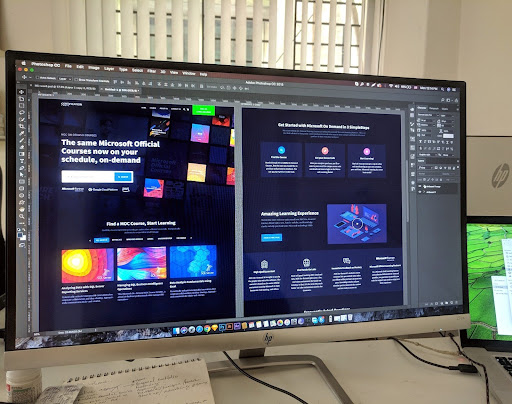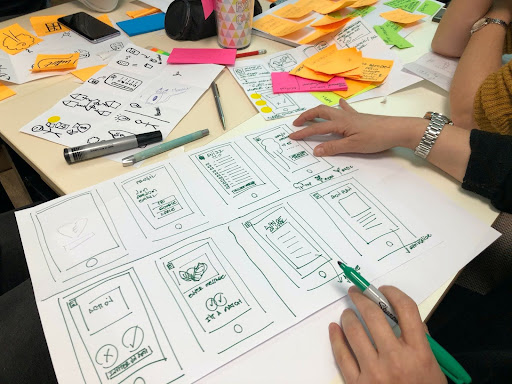Accessible Elegance: How Voice Generators Redefine Modern Web Design
Step into the pulsating heartbeat of the digital dimension in 2024. Where user experience is the currency. It’s time to witness a silent revolution in modern web design.
Elegance.
Take note businesses, UX designers, and architects of the web! This is more than just a design philosophy. On the contrary, it's a gateway to a digital realm. One where sophistication works hand in hand with inclusivity.
Your website should be a visual spectacle. This will create a seamless conversation aimed at your customers. To do this, it should effortlessly reach every user.
As pixels give way to poetry we are seeing the metamorphosis of web design. In this article, we explore how Voice Generators have become avant-garde tools in the web design industry. We examine their impact and how they reshape the contours of modern web design.

The evolution of accessible design
Inception to standards: Early foundations (1990s-2000s)
The roots of accessible design trace back to the early days of the Internet. An era where a decentralized and often chaotic web environment prevailed.
As the 1990s progressed, the need for a structured approach became evident. Initiatives emerged with this in mind. One of the most important was W3C's Web Content Accessibility Guidelines (WCAG).
These laid the groundwork for a standardized framework. The early milestones set the stage. They emphasized the importance of prioritizing accessibility in all digital interfaces.
Responsive revolution: Mobile era (2010s)
The digital industry experienced a seismic shift with the advent of smartphones. Designers faced the challenge of creating interfaces that seamlessly adapted to various screen sizes.
This became known as the responsive design revolution. Which turned into a cornerstone of accessible design. This process introduced flexible layouts and media queries to the design industry.
As the mobile era unfolded, the emphasis shifted from static websites to dynamic, user-friendly experiences.
Legal mandates & global impact (2010s-Present)
The past decade saw a surge in legal mandates for the internet and data collection. Governments worldwide implemented regulations to ensure digital inclusivity.
The enforcement of accessibility standards became a legal obligation, for example, GDPR.
This movement also reflected a global commitment to creating an internet accessible to all. The ripple effect of these mandates is felt in every corner of the digital realm today.

Voice generators assist in inclusivity
AI voice generation
Let’s welcome the new kid on the block: AI voice generation! This advanced tool has become a digital angel for turning inclusive concepts into reality.
This concept involves spoken words. It's the seamless integration of AI into the web framework. This will ensure accessibility is an operational reality for your business.
From visually impaired users accessing information audibly to those preferring a hands-free browsing experience. AI voice generation embodies inclusivity to its very core.
This will ensure your business's digital footprint speaks to all users effectively.
Enhancing engagement through natural voice
AI has functions beyond accessibility. Voice generation introduces the element of naturalness. The nuanced intonations, cadence, and inflections mimic human speech.
These will encourage a connection between technology and the user. One that goes beyond the screen.
A recent report by Technavio.com revealed that the text-to-speech market share is expected to increase by USD 3.14 billion from 2020 to 2025. This level of popularity forecasts a favorable outlook for businesses involved in this industry.
This level of engagement is crucial for retaining user interest. As well as ensuring that information is accessible and captivating. This ensures a conversational space where users feel heard and understood.
Adaptability across devices and platforms
The adaptability of AI stands out as one of its key strengths. This is evident on desktops, mobile devices, or any other platform! AI-generated voices seamlessly integrate into the user experience.
This adaptability ensures that accessibility isn't confined to a specific device or environment. This provides a consistent and inclusive experience across the entire digital spectrum.
Designers can now focus on creating content that transcends limitations. Confidently aware that AI can deliver it effectively. Regardless of the user's chosen medium.
Strategic integration for businesses
Enhancing customer reach
Accessible design has evolved from being an option. Now it’s a requirement to facilitate all of your customers in 2023. Boost your customer reach by prioritizing these seamless experiences for all users online.
You should integrate features into your website, such as:
- alternative text
- easy navigation
- keyboard-friendly interfaces
These types of systems are a business-savvy move. A more accessible website means broader customer access. Ultimately, translating into brand loyalty and trust.
In today's interconnected world, inclusivity isn't just appreciated. It's expected. Be the business that meets expectations and exceeds them.
SEO optimization and market positioning
Accessible design and SEO optimization are powerful tools for businesses. Especially when used in perfect harmony. You should have the basic SEO practices taken care of. These include:
- descriptive headings
- description information
- image alt text
- keyword research and optimization
However, to take your business to the next level you should consider advanced strategies like:
- optimizing your content for voice search
- using semantic HTML for better search engine understanding
- employ structured data to enhance rich snippets
These days, businesses, like yours should view accessibility as an inherent part of their SEO strategy. Ensuring that every element is compliant. While strategically crafted to boost online visibility.
This dual approach positions your website as accessible and prominent in search engine rankings.
Website tracking
As the modern digital industries evolve to replace traditional ones, using a website tracker has become a common practice. It's the key to understanding your site's performance. Additionally, it can improve the effectiveness of your ad campaigns.
Website trackers can help your business to analyze:
- user behavior
- your website health
- the target audience for ads
- end-user data privacy
In 2024, major privacy laws like GDPR, ePrivacy Directive, and CCPA demand strict compliance. This is where a Consent Management Platform (CMP) becomes necessary.
Launched in 2012, Cookiebot is on a mission. It seeks the perfect balance between data privacy and compliant user tracking.
This scanner detects all cookies and trackers on your domain. Then, it puts control in the hands of your end-users through granular consent.

UX design crafting seamless conversations
Web design journeys
UX designers are like digital artists. They hold a brush that paints more than aesthetics. It crafts intuitive web design journeys. Their secret lies in understanding user behaviors.
A study by Top Design Firms indicated that half of consumers (50%) believe a website design is vital for a company’s brand. This indicates the importance of having a stunning website. Including a flawless user journey, to captivate an audience saturated with other competition in 2024.
A well-thought-out design should:
- keep it simple
- ensure every element serves a purpose
- harness the power of micro-interactions
- guide users effortlessly through
Web design may involve meeting standards. However, it's more about facilitating interactions. Where every click, swipe, and scroll feels like second nature.
Stand out as a noteworthy competitor in 2024! You should strive for an immersive experience that goes beyond accessibility. Make the digital journey an unforgettable one.
UX for inclusive interactions
UX design is more than skin deep. It is working on inclusivity through thoughtful interactions. Designers can:
- customize fonts for readability
- embrace high-contrast themes
- design forms with empathy and the end user in mind
UX designers need to create digital spaces that resonate with a diverse range of users. It's the small details that matter! You should ensure that every interaction is tailored to the individual user. Regardless of their abilities.
You must craft an inclusive experience that transcends accessibility. Allow it to form connections and make every visitor feel seen and valued.
Speed as UX
Speed is the unsung hero of user experience. UX designers must champion website performance for seamless interactions.
Consider the following actions:
- optimize images with lazy loading
- embrace asynchronous loading for scripts
- minimize those crucial HTTP requests
A great design will ensure every interaction is swift and frictionless. We all know time is money. The speed of a website has become synonymous with user satisfaction. We highly recommend you create an experience that captivates and retains attention.
Content management systems
Optimizing web design with WordPress
WordPress is a standout choice for crafting seamless web design journeys in content management systems. It features a user-friendly interface. This includes a plethora of plugins! Essentially making it a go-to platform for creating accessible and elegant websites.
You can easily customize your WordPress theme to align with your brand's identity. This will result in a unique and visually appealing website. Explore plugins that enhance functionality within the software. These include:
- SEO optimization
- social media integration
- performance improvements
This platform allows you to prioritize accessibility by choosing themes that are inherently inclusive. They are usable on all types of devices.
One of the main principles of UX design is to simplify navigation with clear menu structures. This always improves the overall user experience. Along with this, we encourage you to use captivating visuals and multimedia. This in turn will enhance your user engagement.
We always recommend optimizing your images for faster loading times on your website. It is advisable to integrate multimedia elements judiciously. This not only improves the user experience but also positively impacts your site's performance.
Dynamic design with CMS flexibility
Some other options for excellent content management systems include:
- Joomla!
- Drupal
- Magneto
- Squarespace
- Wix
Web designers should explore these platforms to see which suits their needs the best. You should factor in:
- customization options
- responsive design features
- accessibility plugins

Future of web design
The future of web design looks bright.
Our journey epitomizes the paradigm shift toward accessible elegance. Beyond trends, it's a call for businesses to fuse design sophistication with inclusivity.
As we embrace these insights, don’t just make websites. Instead, curate immersive digital experiences. The future beckons with a demand for seamless, elegant, and accessible design. A place for a compelling narrative that transcends the digital realm.
Copyright © . All Rights Reserved